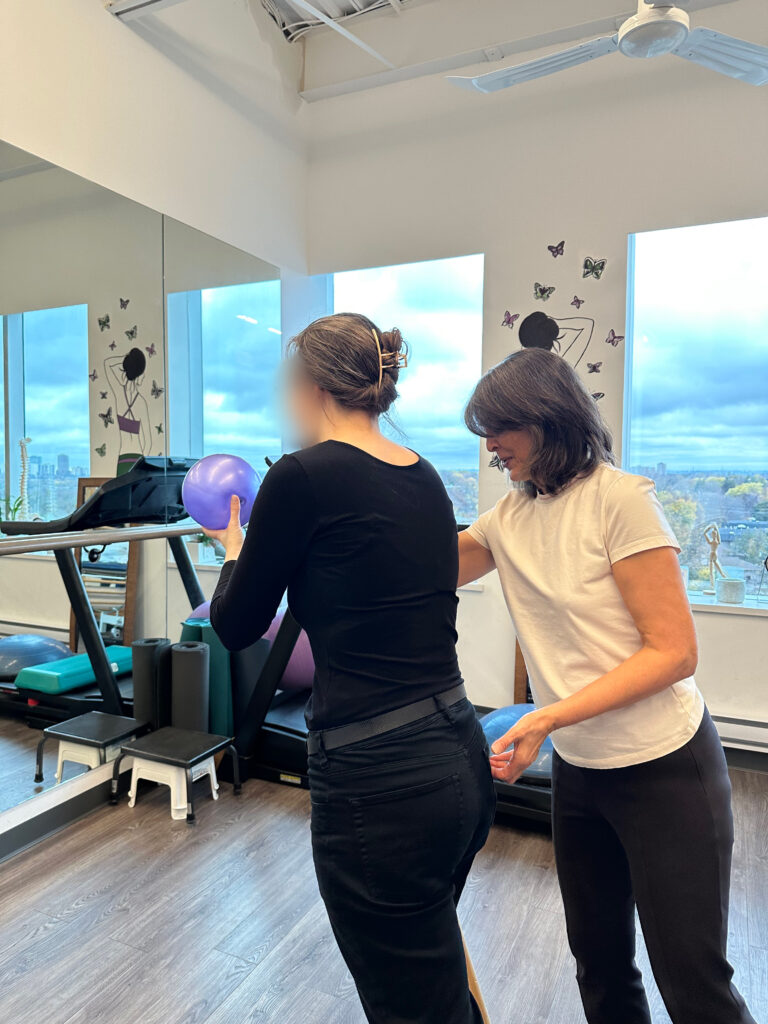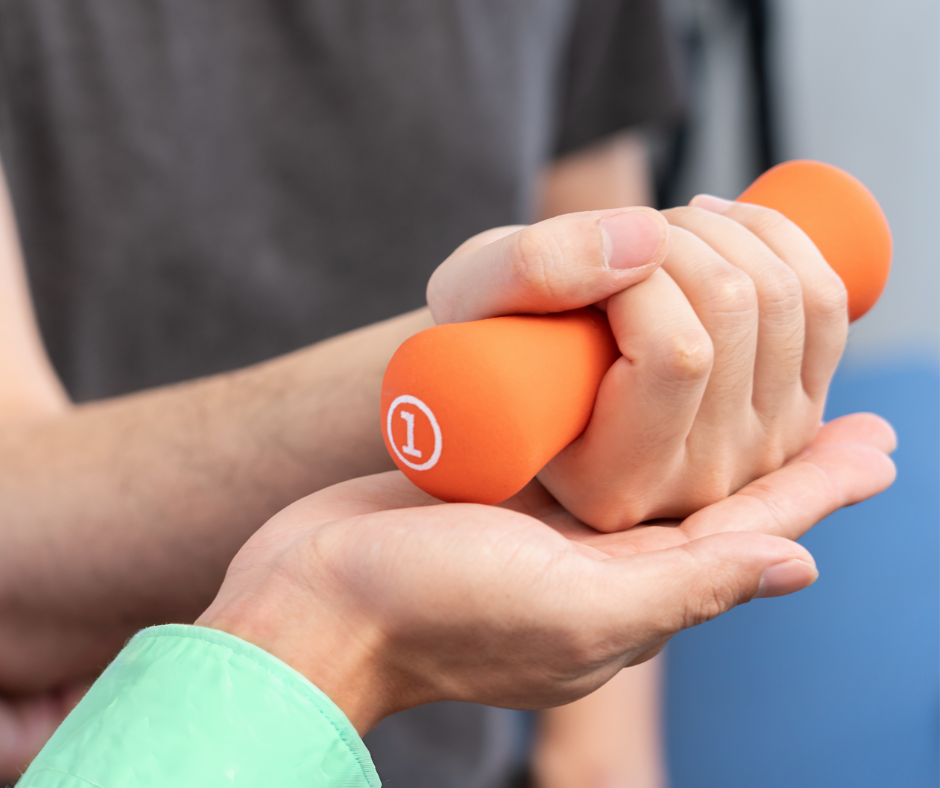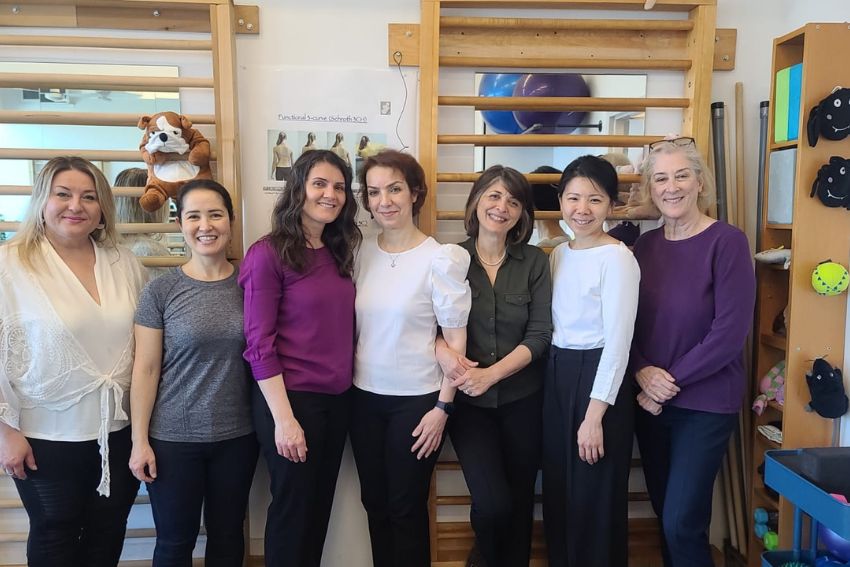Quick intro
This article:
- Breaks down neuroplasticity in clear, accessible terms.
- Highlights practical benefits for emotional, mental and physical health.
- Differentiates between standard physiotherapy and neuro-focused rehabilitation.
- Explains how short, high-repetition exercises illustrate principles of neuroplasticity and can be reinforced during a focused assessment.
What is neuroplasticity?
Neuroplasticity is the brain and nervous system’s ability to change and form new connections with practice.
Think of brain pathways like walking trails. The more you use a path, the clearer it becomes. When you repeat a movement or a task, the nervous system strengthens those connections so the movement gets easier over time.
Two simple examples:
- Learning to use a weakened hand after a stroke,
- Improving walking balance by practicing a single step over and over.
Both come from your brain and nerves adapting through repeated practice.

What neuroplasticity can help improve
Key benefits:
- Rebuilds movement and motor skills: Targeted practice helps recover useful movement and improve;
- Motor skills
- Motor function
- Improves muscle control and muscle tone: Gentle, repeated practice can help manage stiffness or weakness.
- Boost thinking and memory when paired with movement: Combining physical tasks with thinking supports cognitive function and cognitive ability.
- Make daily tasks easier: Focused practice aims at the everyday things you want to do, like dressing, cooking, or reaching for a cup.
- Rebuilds movement and motor skills: Targeted practice helps recover useful movement and improve;
Core principles that make practice successful
These three factors guide effective practice:
- Small steps + high repetition: Choose a single, manageable movement and repeat it many times. Short, frequent practice matters more than long, confusing sessions.
- Intensity / dose: This is the amount of practice. How often and how focused you are helps shape progress. Focused effort beats unfocused repetition.
- Specificity: Practice the exact task you want to improve (for example, picking up a spoon) rather than general movement. Targeted practice trains the precise brain pathways you need.
General physiotherapy vs neuro-focused physiotherapy. What’s the difference?
General physiotherapy (what to expect):
- Often begins with balance and coordination checks and broader mobility screening.
- Uses a range of exercises for overall safety and general strengthening.
- Good for broad improvement and fall prevention.
Neuro-focused physiotherapy (what to expect):
- Start with a targeted assessment to find the specific functional limits that stop you doing a daily task. A skilled physiotherapist picks 1–2 precise, simple exercises aimed at that task and prescribes many repetitions with clear steps to progress.
- The goal is to turn practice into practical change. Real tasks you care about, done more easily.
If you’d like guidance in creating a clear, personalized plan for daily activities that are important to you, our team is here to help. Book an appointment.

Why We Design Exercises to Be Simple, Clear, and Repeatable
At CSN, exercise isn’t about doing more, it’s about doing the right movement, the right way, at the right pace. We use guiding rules that make practice effective and sustainable:
- One clear goal per exercise: For example, “reach and bring a cup to your mouth.” Each exercise should have a single focus so the brain can connect the movement with the task.
- Keep instructions simple: If a task feels complex, we break it down into smaller, more manageable steps.
- Repetition matters : We usually start small (5 to 12 repetitions, in several short sessions each day) and adapt based on each individual’s tolerance.
- Progress slowly: Once a movement becomes reliable, we might add a few reps, adjust resistance or height slightly, or reduce external support.
This approach builds on principles of neuroplasticity — small, consistent steps that help the brain and body “relearn” skills. Over time, these exercises are not just movements but building blocks for independence in daily life.
The value of planning and tracking small wins
Progress in neurorehabilitation is often built on small, steady changes. Tracking these changes makes them visible, not just to your physiotherapist, but to you.
- Keep simple notes: Use a notebook or phone checklist to jot down how many repetitions you did and how each session felt.
- Set tiny, realistic goals: Aim for gradual steps such as adding two more repetitions, or using one hand less for support.
- Notice and celebrate wins: Each improvement, however small, is evidence that your nervous system is adapting and learning.
By planning and tracking in this way, both you and your physiotherapist can see patterns more clearly and adjust your program with confidence.

Simplify Before You Intensify
Complex tasks can feel overwhelming. Breaking a difficult exercise into one clear, repeatable sub-task helps build stability and confidence.
Example: If dressing feels challenging, focus on pulling the sleeve over the hand first until it can be done consistently. Once that step is stable, add the next part of the task.
Understanding Gradual Progress
Improvements are usually slow and steady. Early gains may be small, and periods of slower progress are common. This is normal.
If progress slows down, try:
- Simplifying or breaking down the exercise further
- Adjusting the repetitions
- Scheduling a focused assessment with your physiotherapist
Safety First
If pain or new symptoms appear, contact your care team promptly. For conditions such as stroke recovery or muscle spasticity, steady, planned practice is often the most effective approach.
Short FAQs
Q: How soon will I notice change?
A: Everyone’s journey is unique. Some people notice small improvements within a few weeks, while bigger gains may take months. The key is consistent, steady practice. Progress may be gradual, but each step counts.
Q: Do exercises have to be hard?
A: Not at all. The most effective exercises are simple, focused, and repeated regularly. Gentle, steady practice helps your nervous system relearn movements safely and effectively.
Q: Can this help me regain balance after a stroke?
A: Yes. Task-specific, carefully guided exercises can help retrain your balance and coordination over time. Progress may be gradual, but each session strengthens your pathways to recovery.
Next steps

By practicing simple, focused steps consistently, you can support steady improvements in both movement and confidence. Our team is here to guide you with personalized plans tailored to your goals. Book an appointment today.
